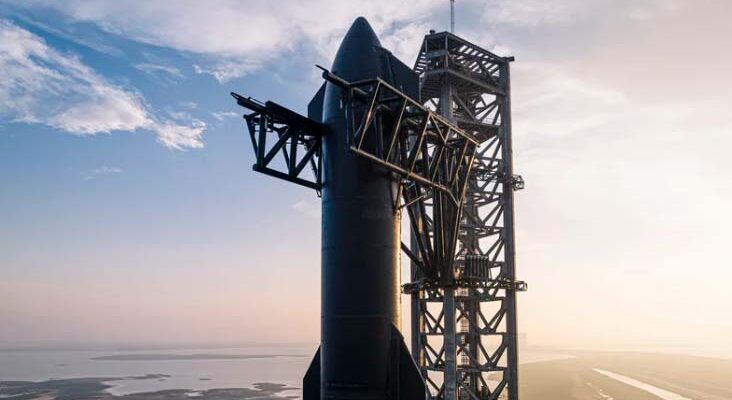SpaceX Scraps Starship Launch Due to Technical Issue
SpaceX, the commercial spaceflight company founded by billionaire entrepreneur Elon Musk, has postponed its first test flight of Starship. This is a massive stainless-steel rocket that could one day carry humans to the moon, Mars and beyond.
The launch was scheduled to take place in South Texas during a 150-minute window on Monday morning, but just 10 minutes before the anticipated liftoff, Musk tweeted that a valve appeared to be frozen, rendering the mission untenable.
The issue occurred in the spacecraft’s super-heavy booster, which uses 33 engines working in synchronicity to lift the 400-foot-tall rocket off the ground.
This is a trade-off, according to Paulo Lozano, director of MIT’s space propulsion laboratory.
“Having that large number of rocket engines firing simultaneously—it’s actually quite hard. I think that’s going to be one of the biggest challenges,” says Lazano.
SpaceX’s choice of fuel, methane, adds to the challenges.
Most high-powered rockets use hydrogen for fuel because it is lightweight and highly efficient, he added.
Methane is cheaper to produce and easier to handle than hydrogen, but methane and the rocket’s oxidizer oxygen need to be chilled to very low temperatures, which may explain the frozen valve.
The next launch attempt will require at least 48 hours of planning, said systems engineer Kate Tice.
Musk said the team would try again “in a few days.”
During Monday’s launch countdown, SpaceX said in a tweet that “with a test such as this, success is measured by how much we can learn, which will inform and improve the probability of success in the future as SpaceX rapidly advances development of Starship.”
The team continued going through the motions as a wet dress rehearsal, stopping just before igniting the engines.
Starship is a critical step towards Musk’s goal of becoming a multi-planetary species by allowing large payloads to be carried into orbit for cheap.
Musk hopes to use Starship to transport the first people to Mars.
SpaceX also has a business interest in seeing its mammoth rocket fly, as Starship could be used to launch large numbers of the company’s internet-providing “Starlink” satellites.
NASA is also paying SpaceX to develop a version of Starship to visit the moon, though that mission is likely still several years away.
The launch of Starship comes at a difficult time for the tech industry, as SpaceX is currently trying to raise additional capital to keep the development of Starship and Starlink going.
For now, investors seem happy to let SpaceX try out its massive, potentially interplanetary rocket.
But as Tim Farrar, the president of TMF associates, a telecom consulting firm, notes, if the launch fails and Starship falls further behind schedule, it could affect all of SpaceX’s business, especially in the current financial climate.
SpaceX seems to understand the risks. It has had many rockets blow up during testing in the past, a development strategy that’s worked well for them overall.
SpaceX Scraps Starship Launch Due to Technical Issue





